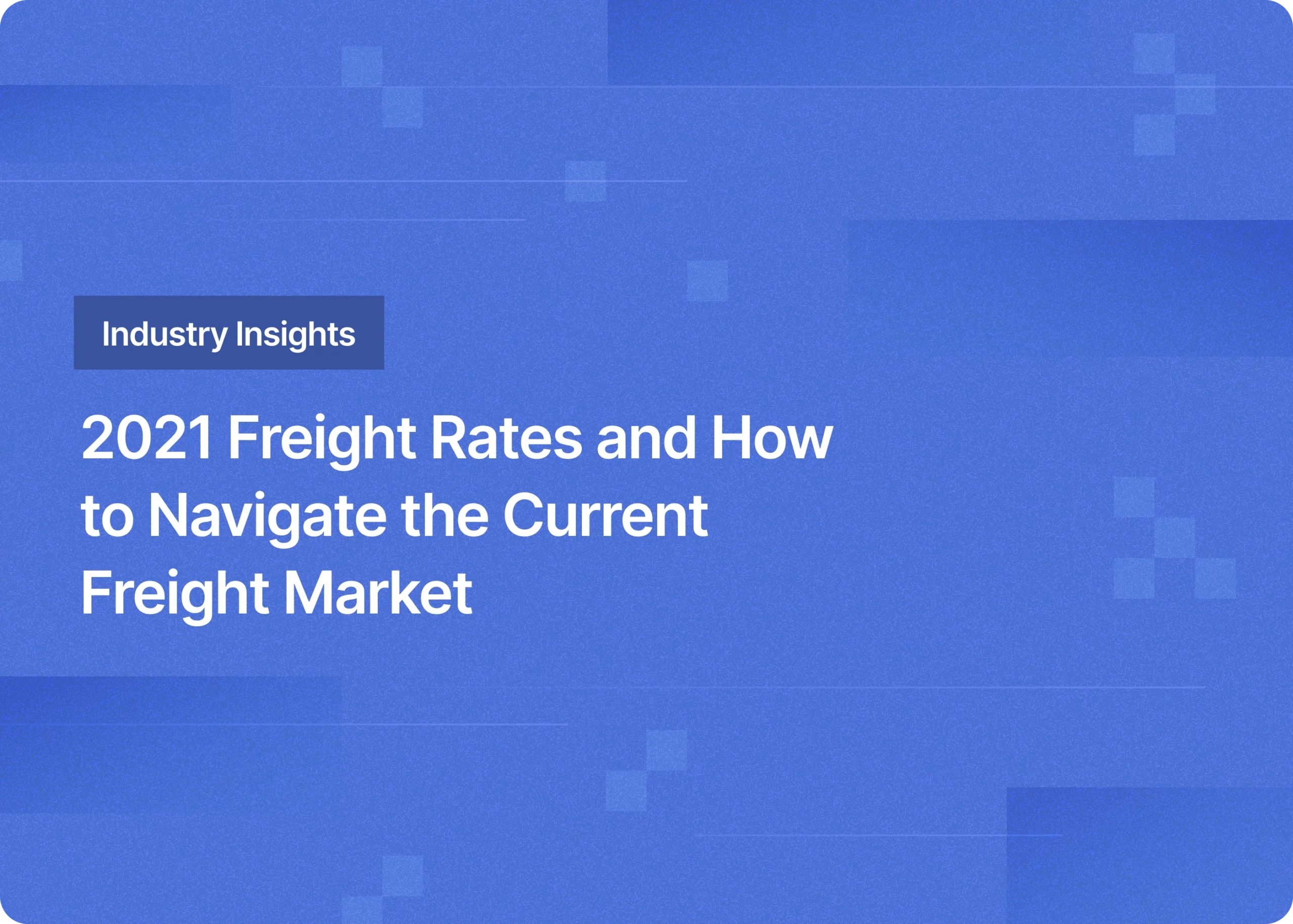With the ongoing pandemic and the uncertainty that it brought to the world, industries across the world are all still scrambling to find their balance and adjust to the new status quo.
The Current Situation of Freight Rates
Freight rates increased by 80% by the end of 2020, which carried over to 2021. The high cargo volume is maintaining high freight rates, which was exacerbated by the influx of COVID-19 online shopping shipments. Freight conditions had just begun improving and catching up from Asia to Europe and the Mediterranean when the giant Ever Given container ship blocked the Suez Canal for almost a week. The blockage that occurred near the end of March obstructed traffic and triggered container spot freight rates to increase, again.
According to Jan Hoffmann, the head of UNCTAD’s trade and logistics branch, “About 80% of the goods we consume are carried by ships,” and the world relies on shipping. From clothes, and medicine, to processed food products, almost all manufactured goods are shipped in containers. And COVID-19 fundamentally changed the way consumers spend money. Instead of spending money on experiences like entertainment, travel, and services, people buy tangible objects. Since countries have been implementing quarantines to ensure public health safety, people have been shopping in online stores, which increases demand for products and freight forwarding services from Asia to the US.

Will Freight Rates Go Down?
International freight volumes are not likely to decrease in the near future, which means that freight rates will not be going down either. Freight rates have stayed high since the second half of the pandemic, and rates have only been climbing since the summer of 2020. Importers are constantly trying to stock up their inventory to keep up with high demand from consumers. With ocean, air, and rail freight consistently being in high demand, storage container capacity will decrease, and freight rates will increase.
International freight will also be preoccupied with shipping medical supplies and COVID-19 vaccines, which will lead to the continuation of unsteady and unpredictable freight rates in 2021.
There are also warehousing and distribution issues. Social distancing requirements are extending the time needed for logistics activities and the supply chain process. The decrease in employees in the workplace and other labor shortages in the delivery process are making the already long process even more time-consuming. Even if more tractors and trucks are brought to the road to catch up with high demand, quarantine rules for returning drivers may still cause significant delays.
How Importers Can Navigate the Current Freight Market
-
Do Research
Importers should do research and decide on which freight mode to use. Choosing which freight mode usually depends on your cargo’s size, weight, and content, and how fast you want the cargo to arrive.
Air freight is faster and safer, but it is much more expensive than ocean freight. Not to mention, with the ongoing pandemic, fewer planes are being flown, and the ones that are flying are prioritizing shipping medical supplies. It also comes with restrictions on what you can transport through air freight (no explosives, gases, and flammable liquids). On the other hand, ocean freight is cheaper, but shipments take a much longer time to arrive. Some potential delays include: slow custom’s clearance, port bottlenecks, and accidental canal blockage. But if you can wait for your shipment, choose ocean freight. It comes with more volume and has a better carbon footprint.
Importers can also compare a few quotations to make sure that the deal they end up going with is the best cost and time-efficient service. It never hurts to ask around, and you can always contact GoFreight for a free demonstration.
-
Be Prepared
Have backup plans, including scheduling a second trucker and looking for storage spaces. Warehousing and distribution facilities can also be explored. Renting a warehouse space can be cheaper than paying demurrage and detention fees, especially when you are running into issues picking up your shipment.
Shippers are already spending so much time waiting for cargo, and no one wants to delay the process even more by getting their shipments stuck at customs. In order to combat and decrease the time spent in port clearance, businesses should have the proper documents for customs clearance well-prepared in advance.

-
Have Patience, But Do NOT Stall
Do not book too far in advance, especially with how unstable the current shipping industry is. Rates may fluctuate and increase if you book too early. Minimize the chances of drastic rate changes by booking closer to the cargo’s ready date. As soon as the dates are set, book the shipments as soon as possible to get your goods moving. This way, you can arrange pickup services early. Book truckers in advance in order to ensure that they will be assigned to help transport your cargo.
-
Stay Flexible
When scheduling shipments, buffer freight budget and transit time. Be prepared for unforeseen delays or limited storage container capacity. Potential extra charges may also appear out of seemingly nowhere. Everyone is trying to move their cargo on schedule without additional fees, but this is an unstable period where anything can happen, and a lot of uncontrollable factors can trigger delays and increased costs.
-
Use Real-Time Information
Keep track of where your shipment is at all times to stay on schedule. Knowing the exact location of your cargo will give you the time to plan ahead and be immediately notified when changes and problems occur. And stay in communication with freight forwarding companies. Experienced supply chain managers can guide organizations through scarcity, foresee potential problems, and offer quick solutions to any disturbance that occurs in production, supply, and delivery.
Real-Time Information Can Be Your Shield
High freight rates are not within the control of any specific company, but there are other factors in the shipping process that businesses themselves can control. With adequate preparation, the willingness to be flexible, and real-time information, freight forwarders can cruise their way through the current freight market.
Having access to real-time information allows businesses to know the exact location of their cargo, which allows them to prepare for the pick-up process accordingly. Companies with this information do not need to worry about paying additional demurrage or detention fees on top of the already high freight rates.
GoFreight has an EDI-integrated, real-time tracking system that supports ocean, air, and rail freight. It synchronizes the ETA/ETD of cargo through GPS and AIS systems to provide real-time tracking data. The system also shows users incoming deadlines and tasks through automatic updates.
Contact us to learn more about how modern freight forwarders utilize real-time data to navigate through the uncertainty and ever-changing freight rates of 2021. Our customer service team will be willing to answer any questions you may have.



